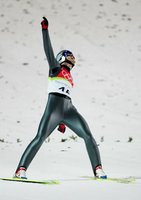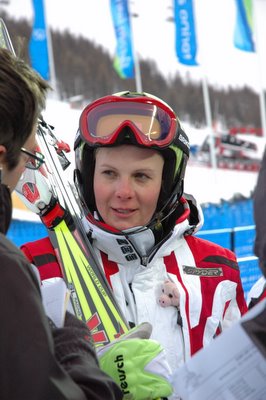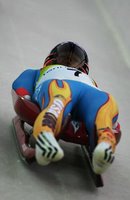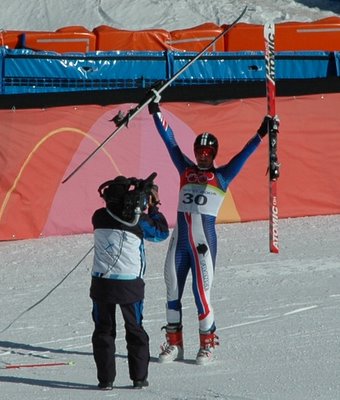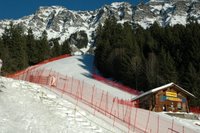I was surprised to see the rapid dismantling of the Olympics going on almost immediately after the Closing Cermony.
First, I stopped at the press center to send some email and photos to the Stowe Reporter. When I arrived, unlike weeks before, I was one of a few reporters left in the place. On my way in I didn't have to pass through security, they just waved me through. The journalists inside weren't working so much as drinking beers as they sent email and talked on their cell phones about how happy they were to finally be coming home. No news flashes were being passed around, no results were handed out.
In the Piazza San Carlo, where the Today Show was aired every day during the Games, fencing and an abandoned stage haunted the open square, and at the medals plaza cranes were taking apart the staging where dozens of athletes were given their medals.
I felt sorry that I hadn't ventured into the city during the bustle of it all. Maybe I missed out.
I couldn't help but think about all that staging and glitz with some cynicism. It's only realistic that TV and print put a polish and shine on the Games that is weirdly absent when you're there in person. There's no musical introduction or introductory shots of the mountains, and city sights. It's just you in the crowd with the athletes at the start and maybe a jumbo screen. There is some commentary, but not like on TV.
This was a notion I pondered some while I was there, but it struck me hardest when I returned and scrolled through the list of shows my TIVO had recorded. One was NBC's coverage the night of the men's slalom.
The Olympic anthem blared and I realized I hadn't heard it once while I was in Italy. I liked it, it gave the coverage a little drama and excitement about what was to come. I felt like I did when I was little, about to watch Katarina Witt and Alberto Tomba compete.
First to come on was bobsledding, the four man. Bob Costas came on with his news caster voice, then handed the show over to event commentators. They showed maybe five runs of the third run, practically screaming commentary about how this guy was going to prove himself, show that he owned the track. Then with excitement we were taken to the first run of men's slaom. Tod Brooker, who showed he doesn't know much about slalom, babbled on about Bode and Rocca and Raich. They only showed about 10 guys, but left out Jimmy Cochran's run. Didn't even mention him even though he was the top American finisher. Then bang we were back down at the bottom of the pass in Cesana at the bobsled track for the fourth and final run.
You get the idea.
Watching the Olympics packaged in a three and a half hour special has it's benefits. You don't have to get in a plane, figure out the transport system or pay thousands of dollars for rooms and tickets and food. You can just eat dinner at home then settle into the couch for the night and watch the show. There were a few times while I was there when I thought that would be nice.
You obviously miss out on some key things. You don't get a real feel for the overwhelming joy and thrill when someone throws their hands up in victory or crashes hard. You don't feel the tension building in the crowd when an athlete puts down a solid performance and someone readies to top it, and you don't get a real feel for the place, it's people, the food, the weather...
The television coverage in the United States is created for high drama and suspense. The audience gets whirled into it, and so do the commentators, spinning it and spinning it until they themselves seem dizzy and confused.
Television coverage in Europe is a little different because they show the entire event live, usually with commentators who know the sport well. They don't shout, unless the happen to be Italian and an Italian wins - then they go nuts. Showing the whole event takes a little more effort on the viewers part. Instead of watching a highlight performance reel, you sit there and watch the whole competition and see the whole thing unfold. Spin usually comes after the competition in a separate highlight show showcasing the best performances from the day and the worst.
The little kid in me likes the Bob Costas, flashy highlight reel, but seeing the NBC coverage after being at the event in person was so disappointing.


